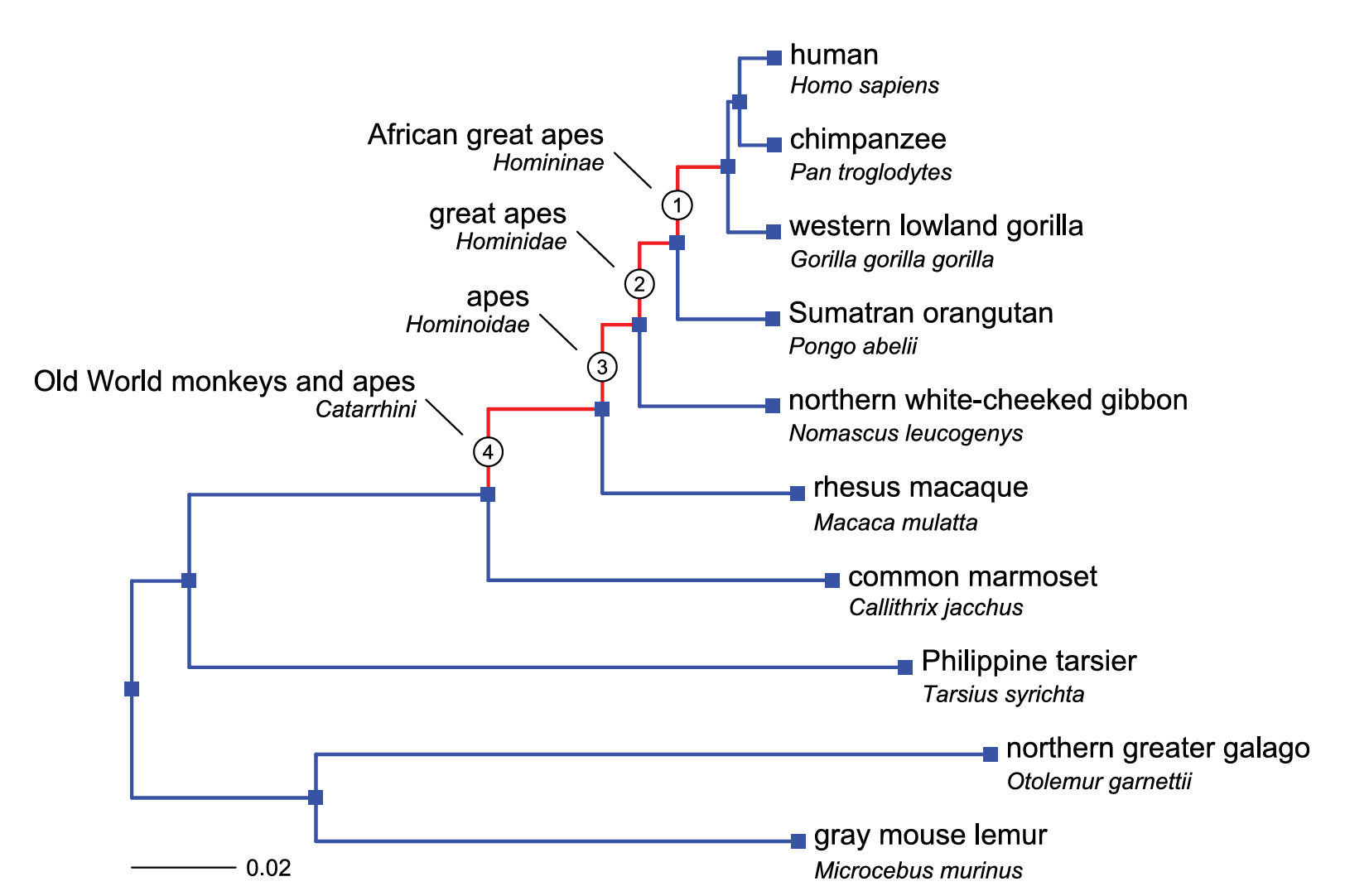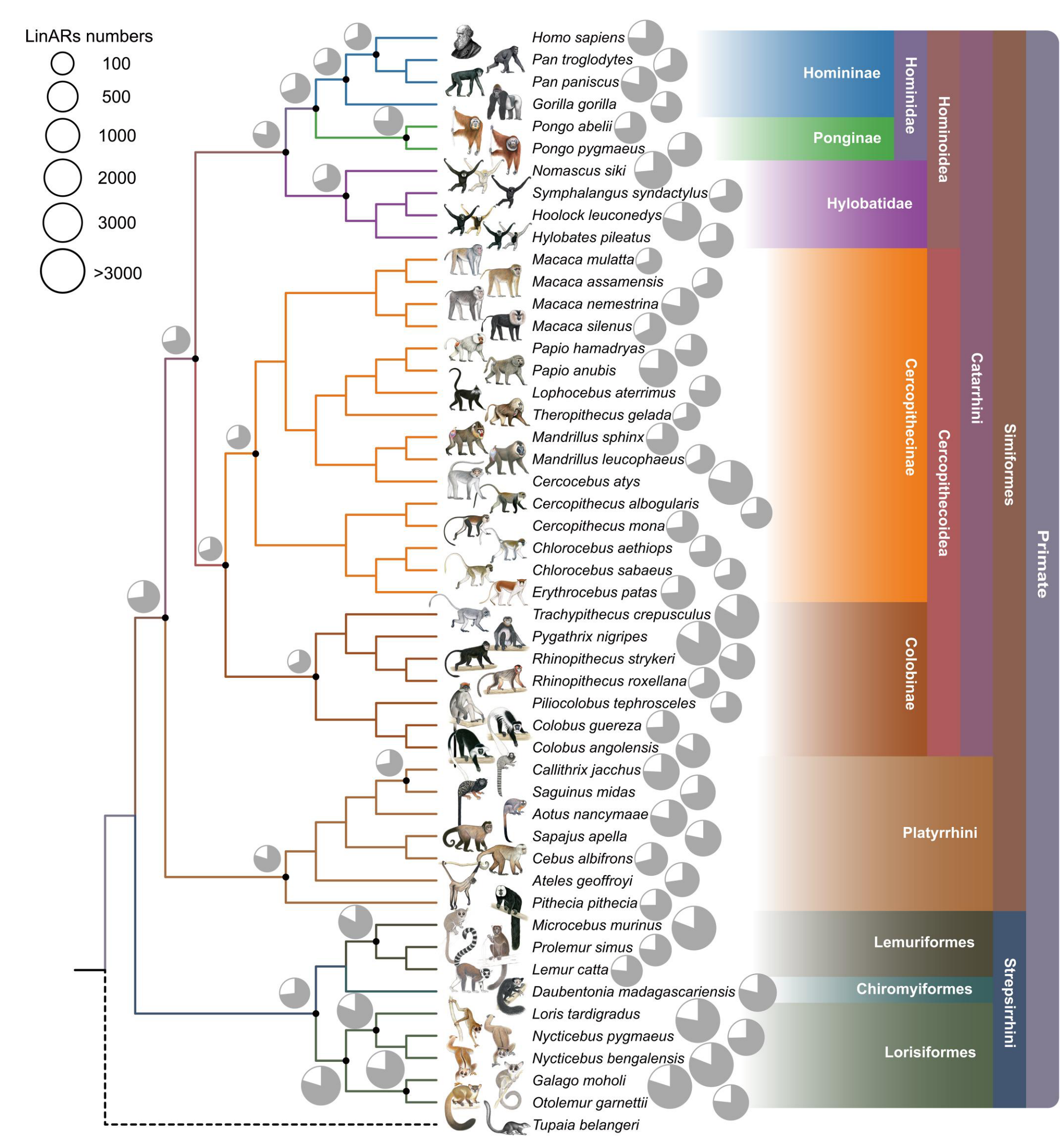Prehistory
Introduction
Prehistory covers the period before the start of written history and includes the emergence of Homo sapiens as a species. Notes motivated by the Prehistory VSI.
Timelines
Stone Age, Bronze Age, and Iron Age
The Three Age system had its uses in the 19th and 20th centuries [but] divisions of time masked continuities between periods.
Comments about the over-simplistic nature of the Three Age system notwithstanding, Table 1 gives a timeline from the dawn of humanity to the rise of the Egyptian Empire, using archaeological periods common in Europe and the Near East. Dates vary by region. These are approximate and Near East-centric when relevant. Interspersed are dates of the Last Glacial Maximum and the rise of the Egyptian empire. Notice how the dates compress to more recent times. Statistically, it’s all Lower Paleolithic!
| Period | Approximate Years Ago | Key Developments |
|---|---|---|
| Lower Paleolithic | >3,000,000 – 300,000 ya | First stone tools (Oldowan, then Acheulean); Homo habilis, Homo erectus. |
| Middle Paleolithic | 300,000 – 47,000 ya | Neanderthals in Europe, early Homo sapiens in Africa; Mousterian tools. |
| Upper Paleolithic | 47,000 – 12,000 ya | Homo sapiens spreads globally; art (e.g., cave paintings), advanced tools. |
| Last Glacial Maximum (LGM) | ~26,500 to ~19,000 ya | Coldest point in the last ice ace |
| De-glaciation | ~19,000 to ~11,700 ya | |
| Mesolithic | 12,000 – 10,000 ya | Transition to farming; microlithic tools; regional. |
| Start of Holocene epoch | 11,700 ya | 9,750 BCE, end of last major glaciation, rapid warming |
| Neolithic | 10,000 – 6,000 ya | Farming, permanent villages, pottery, early religion. |
| PPNB mega-sites | from 10,000 ya | See Table 2 for details |
| Chalcolithic (Copper Age) | 7,000 – 5,300 ya | Use of copper tools; proto-urban settlements (e.g., Çatalhöyük). |
| Bronze Age | 5,300 – 3,200 ya | Metal alloys (bronze); writing (cuneiform, hieroglyphs); early states. |
| Stonehenge | started 5,000 ya | |
| Old Kingdom Egypt | ~4,700 ya | begins around 2,686 BCE, Egyptian Empire rises |
| Great Pyramid of Giza | 4,500 ya | |
| Iron Age | 3,200 – 1,400 ya | Iron tools; rise of empires (Assyria, Babylon, Persia). |
The Holocene is the current geological epoch, beginning 11,700 years ago at the end of the last major glaciation. It is formally defined by a sharp warming event recorded in the Greenland NGRIP ice core, where a marked rise in deuterium levels signals the end of the Younger Dryas, a brief return to colder conditions following the Last Glacial Maximum. This transition marks the start of the present interglacial period, characterized by relatively stable and warm climates in which agriculture and human civilization developed.
PPNB Mega-Sites and Other Significant Constructions
Table 2 is a list of major PPNB (Pre-Pottery Neolithic B) mega-sites, with a few key facts for each. These sites are mostly from the Levant and Anatolia (most of modern-day Turkey), dated roughly 10,700–8,200 ya (8,700–6,200 BCE).
| Site | Region | Dates (ya) | Key Facts | Structures | Est. Population |
|---|---|---|---|---|---|
| Aşıklı Höyük | Central Anatolia | 10,400–9,300 | Early domestic sheep/goats; burned dwellings; planned layout | ~400 buildings | 400–1,000 |
| Çayönü | Southeastern Turkey | 10,300–9,000 | Copper use; architectural diversity; skull cults | >200 structures | 500–1,000 |
| Göbekli Tepe | Southeastern Turkey | 11,500–10,000 | T-shaped pillars; ritual focus; no dwellings | ~20 circular enclosures | None permanent (ritual site) |
| Jericho (Tell es-Sultan) | West Bank | 11,000–9,000 | Oldest city; stone tower and wall | Hundreds over time | Up to 2,000 |
| Ain Ghazal | Jordan | 9,600–8,200 | Plaster statues; signs of overuse of environment | ~150 structures | 2,000–3,000 |
| Beidha | Southern Jordan | 10,200–9,200 | Planned village; early herding; round to rectangular buildings | ~65 buildings | 200–300 |
| Abu Hureyra | Syria | 13,000–7,000 | Domestication sequence; dietary shifts | Hundreds across phases | Several hundred to 2,000 |
| Nevalı Çori | Southeastern Turkey | 10,500–9,000 | Pre-Göbekli architecture; skull caching | ~30 buildings | 100–200 |
Stonehenge was constructed in phases between about 5,000 and 4,000 years ago, with the earliest earthworks dating to around 5,100 years ago and the main stone circle erected around 4,500 years ago. It is part of a broader ritual landscape that includes Durrington Walls, a large Neolithic settlement, and Avebury, the largest stone circle in Europe, built around 4,600 years ago. Other major sites include Silbury Hill, a massive artificial mound from about 4,400 years ago; Grime’s Graves, a Neolithic flint mine complex in Norfolk; and the Ring of Brodgar and Maeshowe on Orkney, part of a dense ceremonial complex dating to about 5,000–4,500 years ago. These are considered true prehistoric mega-sites in the British Isles.
The Great Pyramid of Giza was built around 4,500 years ago, during the reign of Pharaoh Khufu of Egypt’s Fourth Dynasty. It is the largest of the three pyramids on the Giza Plateau and originally stood about 146.6 meters tall. Constructed as a royal tomb, it was part of a larger complex that included subsidiary pyramids, temples, and causeways. The two other major pyramids at Giza, built for Khafre and Menkaure, followed within the next century. These pyramids are the best-known and most enduring monuments of Egypt’s Old Kingdom, a period that lasted from about 4,700 to 4,200 years ago, when pyramid-building reached its height.
These sites are shown in the nearby map. The map was created with the code in Section 6.
Hominins
Hominins are all species on the human side of the human–chimpanzee split.
A hominin is any species that belongs to the group consisting of modern humans (Homo sapiens), our immediate ancestors, and all extinct relatives more closely related to us than to chimpanzees. This includes species in the genera Homo, Australopithecus, Paranthropus, and Ardipithecus.
Monkeys and Apes
Monkeys are primates that typically have tails, walk on all fours, and are generally smaller and more arboreal than apes. They include New World species like capuchins and howlers, and Old World species like baboons and macaques. Apes, by contrast, are tailless, usually larger, and have a more upright posture, with advanced cognitive and social abilities. The apes include gibbons, orangutans, gorillas, chimpanzees, and humans. While both groups are part of the primate order, apes belong to the Hominoidea clade and are more closely related to humans than monkeys.
Humans in Context within Primates
The next diagram is a cladogram for humans, chimps, gorillas, orangutans, baboons, and lemurs, including approximate divergence dates. It is a text-based cladogram with nested clades (monophyletic groups).
Primates (~85–90 million years ago)
├── Strepsirrhini (~63–85 million years ago)
│ └── Lemuriformes (~60 Mya)
│ └── Lemuridae (~50 Mya)
│ └── Lemur, Eulemur, etc. ← lemurs
└── Haplorhini (~63–70 Mya)
├── Platyrrhini (New World monkeys, ~40–45 Mya)
│ ├── Cebus ← capuchins
│ ├── Alouatta ← howlers
│ └── Saguinus, Callithrix, etc. ← tamarins, marmosets
└── Catarrhini (Old World monkeys + apes, ~25–30 Mya)
├── Cercopithecoidea (Old World monkeys, ~25 Mya)
│ ├── Papio ← baboons
│ ├── Macaca ← macaques
│ └── Colobus, Cercopithecus, etc. ← colobines, guenons
└── Hominoidea (apes, ~25 Mya)
├── Hylobatidae (~18–20 Mya)
│ └── Hylobates, Nomascus, etc. ← gibbons
├── Ponginae (~16–18 Mya)
│ ├── Sivapithecus † ← Miocene relative of orangutans
│ └── Pongo ← orangutans
└── Homininae (~8–10 Mya)
├── Gorilla ← gorillas
└── Hominini (~6–7 Mya)
├── Pan ← chimpanzees, bonobos
└── Homo lineage
├── Sahelanthropus † ← ~7 Mya
├── Ardipithecus † ← ~5–6 Mya
├── Australopithecus † ← ~4–2 Mya
├── Paranthropus † ← ~2.7–1.2 Mya
└── Homo
├── Homo habilis † ← ~2.4–1.6 Mya
├── Homo erectus † ← ~2–0.1 Mya
├── Homo neanderthalensis † ← ~400–40 kya
├── Homo floresiensis † ← ~100–50 kya
└── Homo sapiens ← modern humans, ~300 kyaFigure 1 and Figure 2 show more detailed cladograms from two recent papers in the field.
Major Clades
| Clade | Description | Members from your list |
|---|---|---|
| Primates | All listed species | All |
| Strepsirrhini | “Wet-nosed” primates | Lemurs |
| Haplorhini | “Dry-nosed” primates | All others |
| Anthropoidea (Simiiformes) | Monkeys & apes | Humans, chimps, gorillas, orangutans, baboons, gibbons |
| Catarrhini | Old World monkeys & apes | Humans, chimps, gorillas, orangutans, baboons, gibbons |
| Hominoidea | Apes and humans | Humans, chimps, gorillas, orangutans, gibbons |
| Hylobatidae | Lesser apes | Gibbons |
| Hominidae | Great apes & humans | Humans, chimps, gorillas, orangutans |
| Homininae | African great apes | Humans, chimps, gorillas |
| Hominini | Humans and closest relatives | Humans, chimps |
| Homo | Genus Homo | Humans, extinct hominins |
Note: Anthropoidea (or Simiiformes) is older terminology and less commonly used in modern cladistics. It includes all monkeys and apes, Platyrrhini (New World monkeys) and Catarrhini (Old World monkeys + apes). It excludes Strepsirrhini (lemurs, lorises) and Tarsiers, so it’s a proper clade under Haplorhini. In cladistic usage today, people more often say Haplorhini → Platyrrhini + Catarrhini, and skip over “Anthropoidea” entirely.
Approximate Divergence Timeline
| Split | Clades | ~Date (Mya) |
|---|---|---|
| Lemurs from rest | Strepsirrhini vs Haplorhini | ~63–85 Mya |
| New World monkeys from others | Platyrrhini vs Catarrhini | ~40 Mya |
| Old World monkeys vs apes | Cercopithecoidea vs Hominoidea | ~25 Mya |
| Gibbons split | Hylobatidae vs Hominidae | ~20 Mya |
| Orangutans split | Ponginae vs Homininae | ~12–16 Mya |
| Gorillas split | Gorilla vs Homo + Pan | ~8–10 Mya |
| Chimps vs humans | Pan vs Homo | ~5–7 Mya |
Principal Genera
| Common Name | Genera |
|---|---|
| Humans | Homo |
| Chimps (common + bonobo) | Pan |
| Gorillas | Gorilla |
| Orangutans | Pongo |
| Gibbons | Hylobates |
| Baboons | Papio |
| Lemurs (various) | Lemur, Eulemur, etc. |
See also
Notes on other relevant VSI books.
VSI Details
- Prehistory—A very short introduction
- Chris Gosden
- Volume 96
- Published 2018
Appendix: Python Code to Make Map
import folium
# Create map centered roughly between UK and the Levant
m = folium.Map(location=[40, 25], zoom_start=4, tiles="OpenStreetMap")
# Define site data: (name, latitude, longitude, group)
sites = [
# Near East
("Great Pyramid of Giza", 29.9792, 31.1342, "Egypt"),
("Aşıklı Höyük", 38.3439, 34.2631, "Central Anatolia"),
("Çayönü", 38.2806, 39.9714, "SE Turkey"),
("Göbekli Tepe", 37.2231, 38.9226, "SE Turkey"),
("Jericho (Tell es-Sultan)", 31.8703, 35.4433, "West Bank"),
("Ain Ghazal", 31.9511, 35.9457, "Jordan"),
("Beidha", 30.3292, 35.4658, "Jordan"),
("Abu Hureyra", 35.8925, 38.3850, "Syria"),
("Nevalı Çori", 37.5725, 38.6633, "SE Turkey"),
# UK Sites
("Stonehenge", 51.1789, -1.8262, "UK"),
("Avebury", 51.4280, -1.8543, "UK"),
("Silbury Hill", 51.4154, -1.8545, "UK"),
("Grime’s Graves", 52.4842, 0.6493, "UK"),
("Ring of Brodgar", 59.0014, -3.2299, "Orkney"),
("Maeshowe", 58.9958, -3.1878, "Orkney"),
]
# Add markers to the map
for name, lat, lon, group in sites:
folium.Marker(
location=[lat, lon],
popup=name,
tooltip=name,
icon=folium.Icon(color="blue" if group == "UK" else "green")
).add_to(m)
# Save map to HTML
m.save("prehistoric_sites_map.html")

